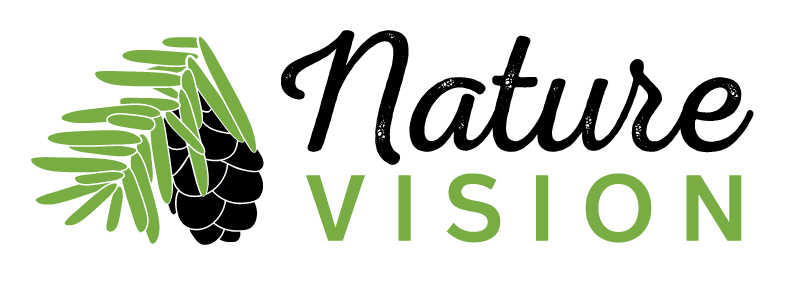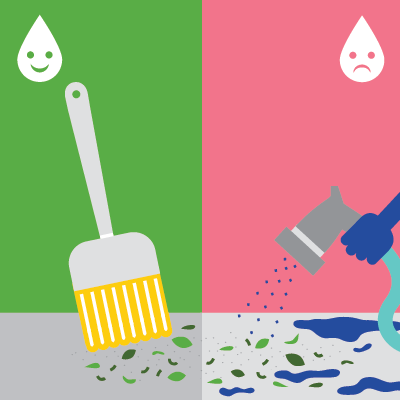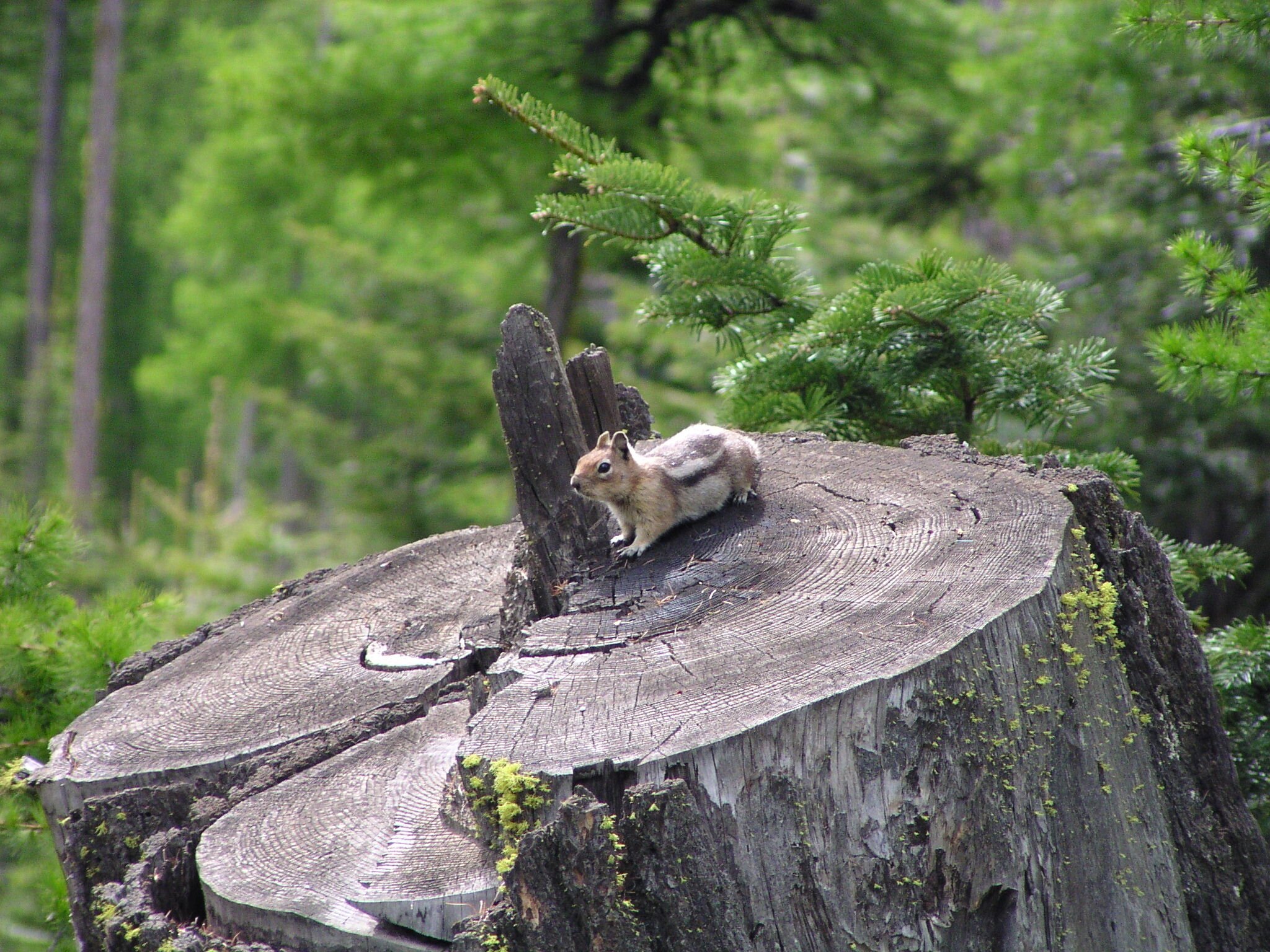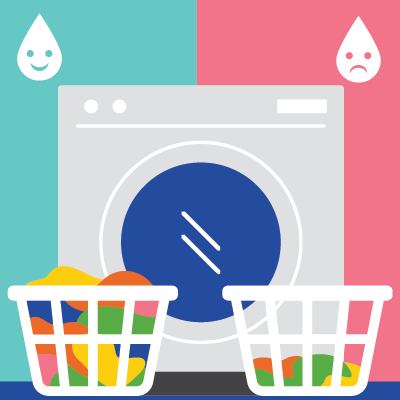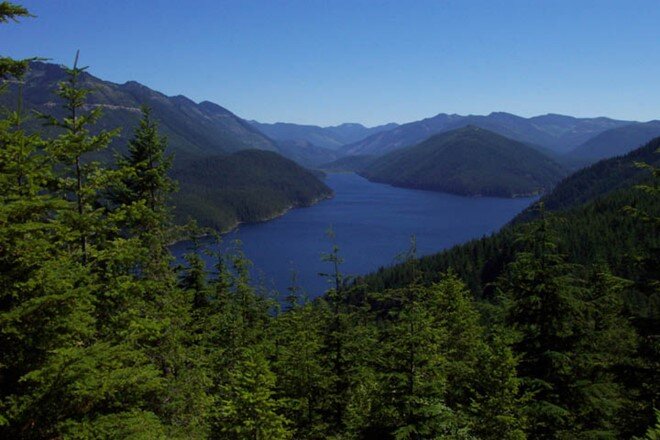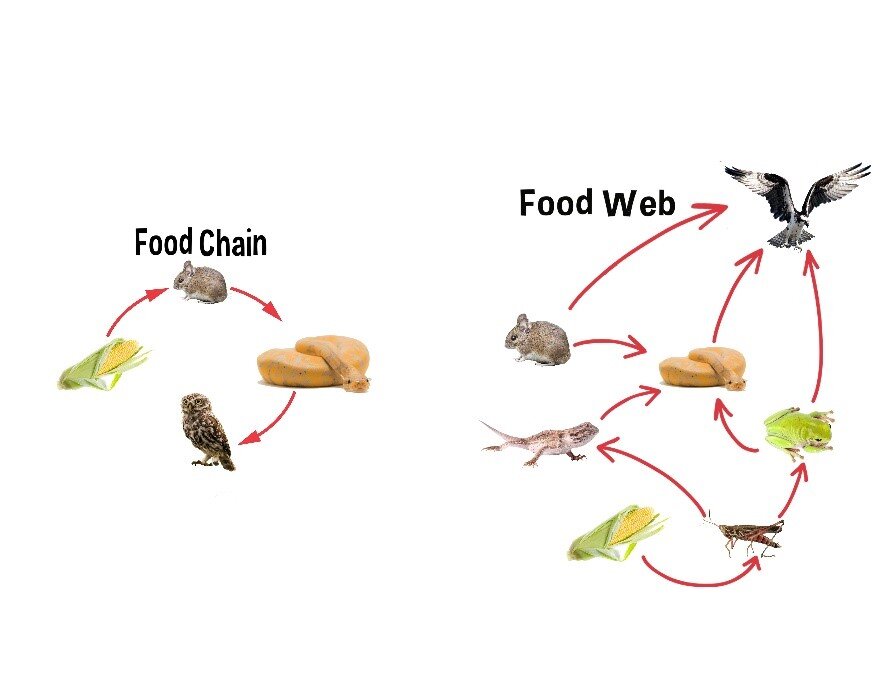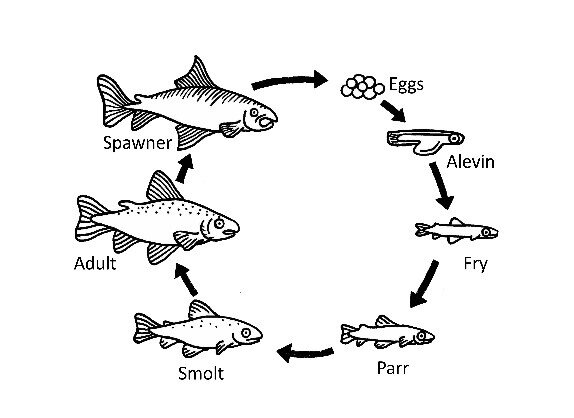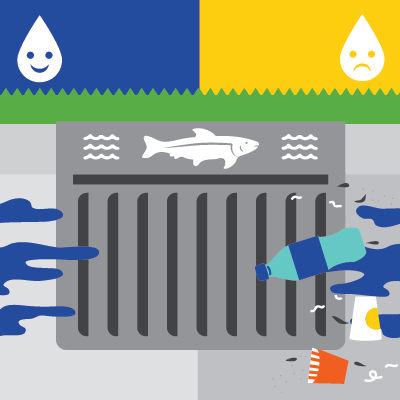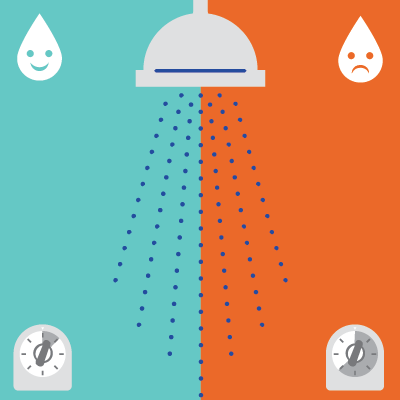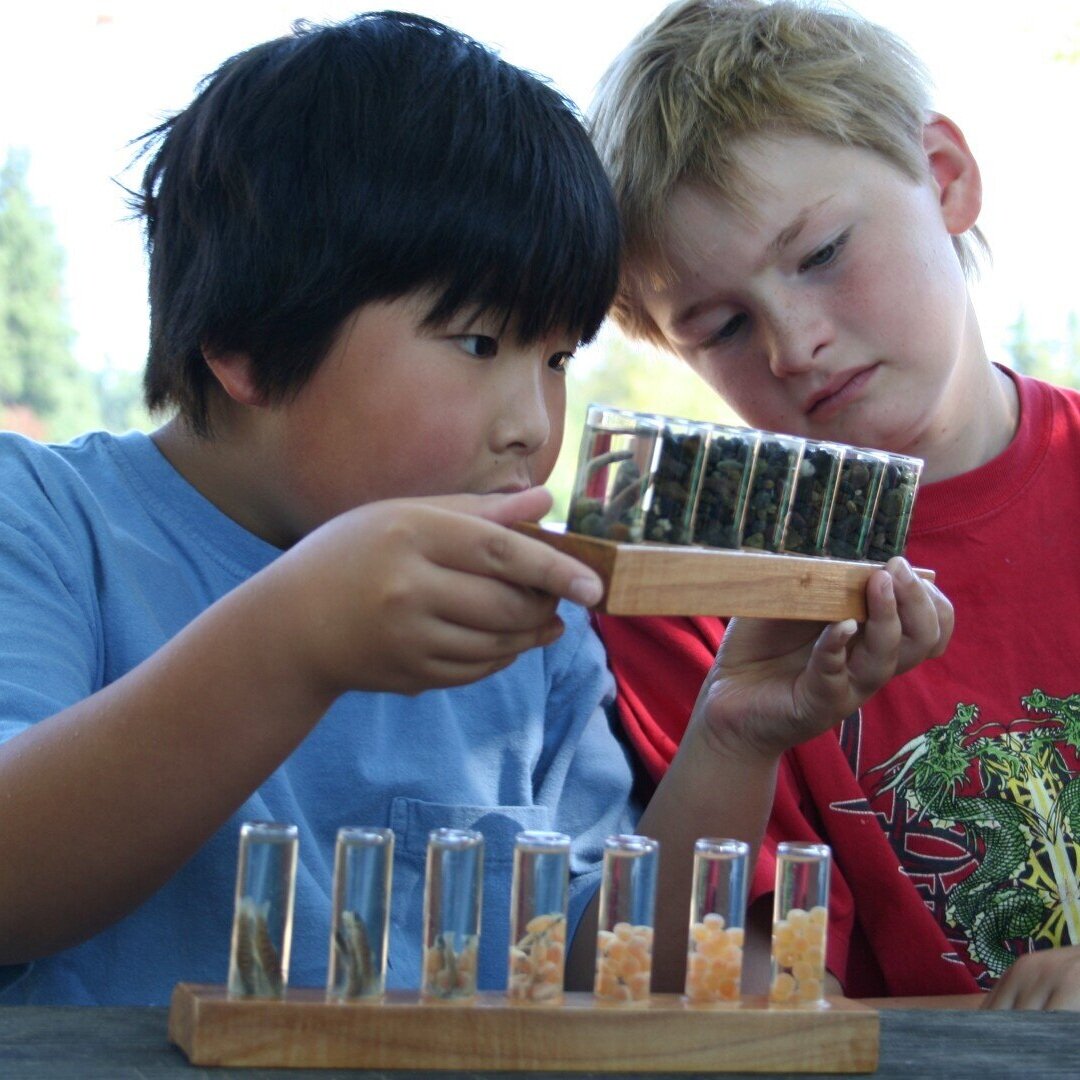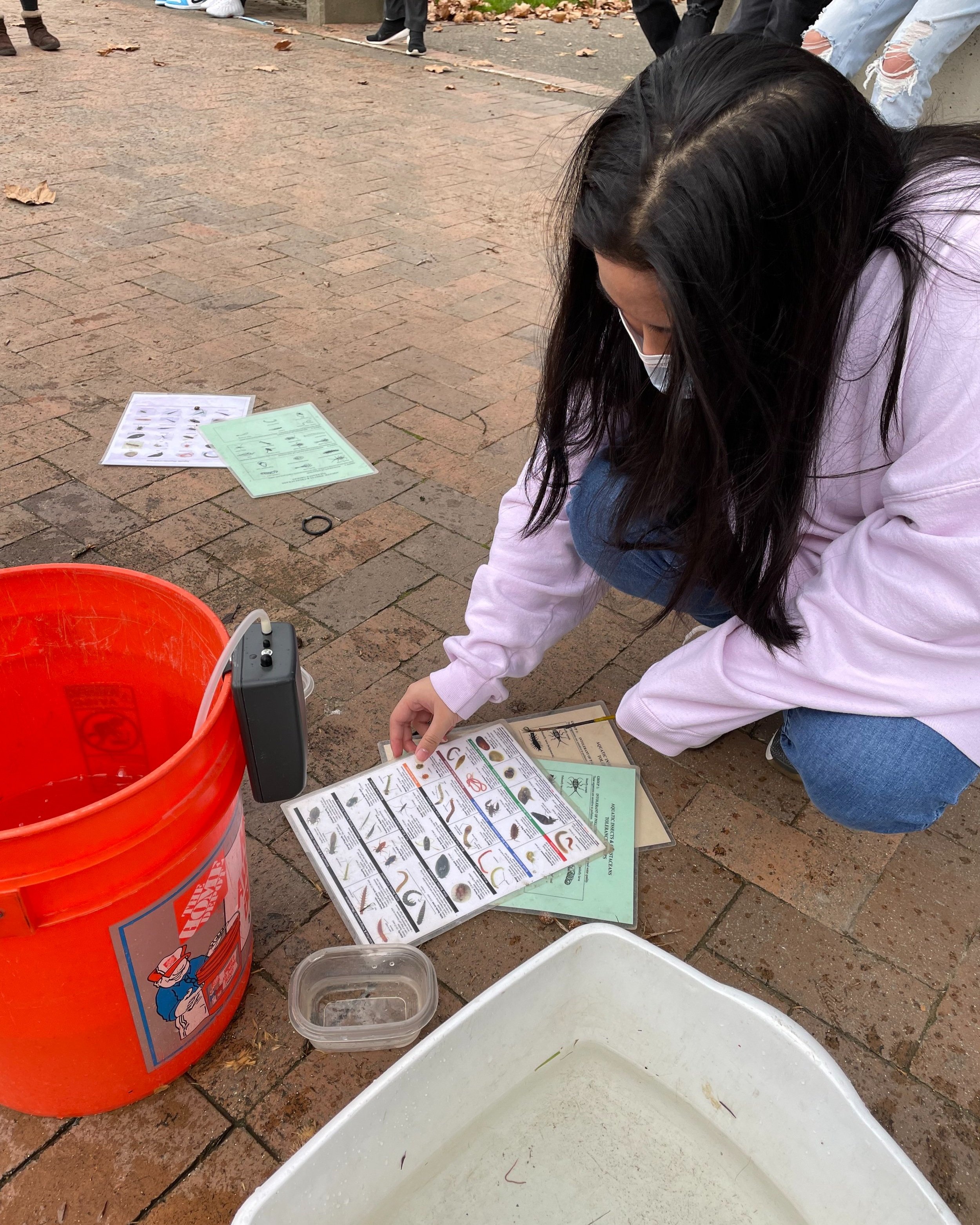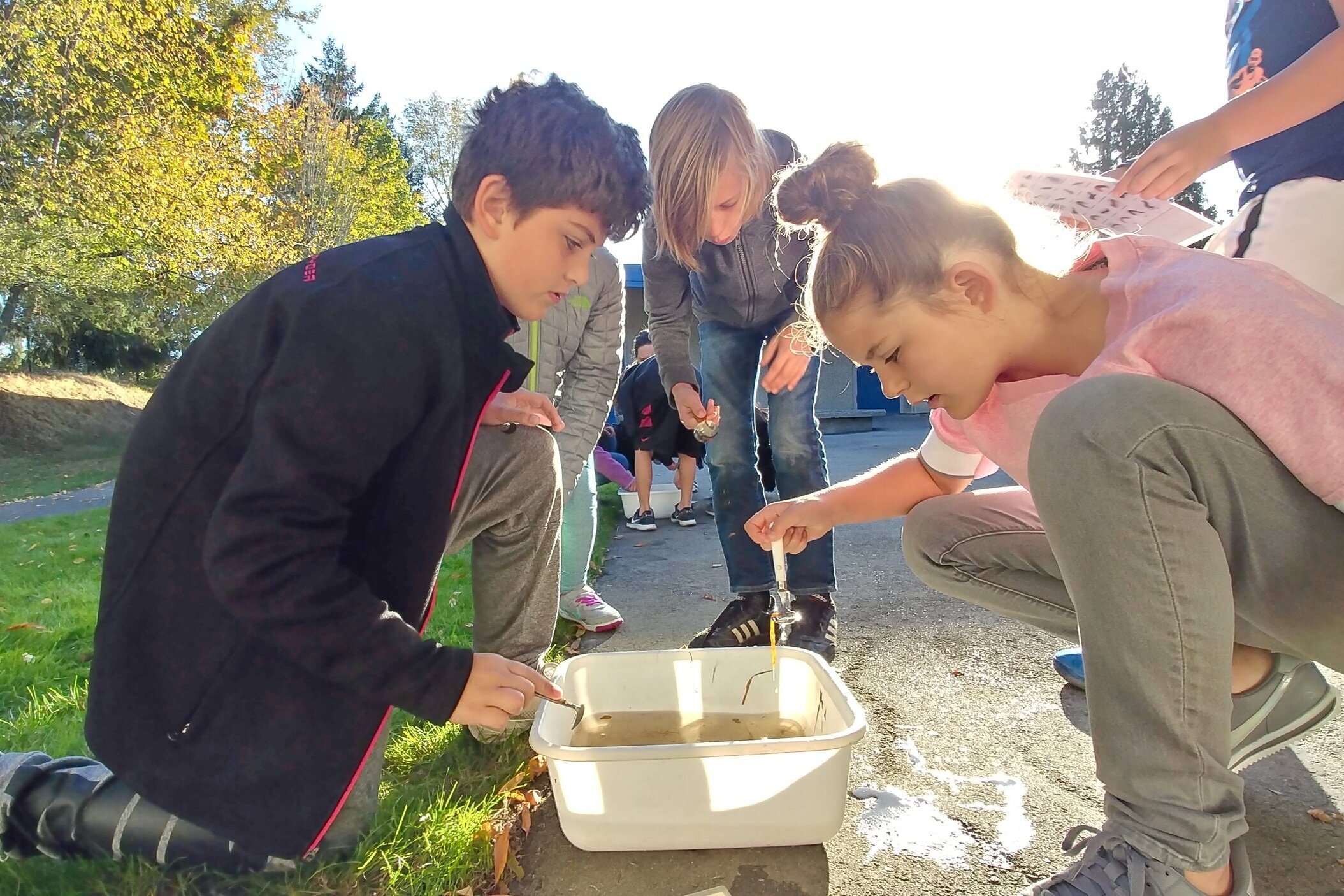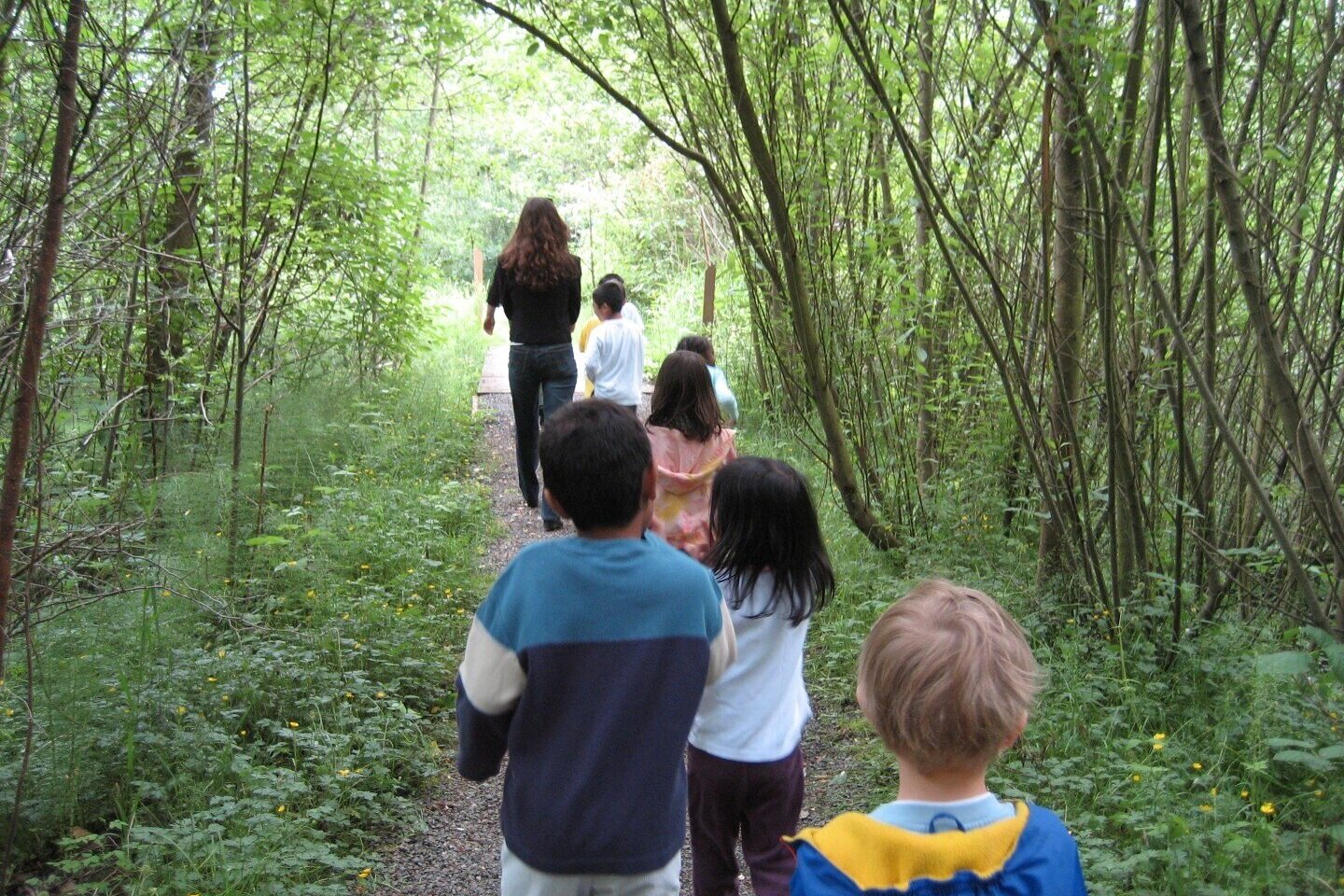Water Conservation Education Programs
In-Classroom and Video Call Programs, Field Experiences, Specialty Programs, Remote Learning Programs, Remote Learning Student Packets for K-12 students
Cascade Water Alliance is a collaboration of local water utilities who provide water to areas of Snohomish and King Counties. They have partnered with us at Nature Vision to bring hands-on water conservation education programs to schools in our community!
All lessons are tailored to our region and are offered to schools within the water service areas of The Cascade Water Alliance. All remote, in-classroom and field programs are offered free of charge to school teachers and educators. These in-classroom programs also support the WA State K-8 Learning Standards and STEM Education.
These programs are offered on a first come, first served basis. Please be aware that scheduling can fill up very quickly.
Registration is now open for the 2022-2023 school year! Nature Vision will be offering in-person programs, asynchronous remote learning programs, synchronous video call programs, and outdoor field trips for the 2022-2023 school year. Nature Vision is committed to accommodating each school as policies are updated. All of our programs can be taught fully outdoors and we can make accommodations for materials handling, group size, and movement in the classroom as needed. We are prepared to continue adapting to the changing landscape surrounding safely learning and embracing environmental education and the outdoors. All Nature Vision staff are fully vaccinated for COVID-19. In short, we have you covered.
New Remote Learning Programs
Nature Vision and Cascade Water Alliance have adapted many of our most popular in-class programs into a virtual format for increased accessibility! We now offer remote curriculum options for teachers, parents, and caregivers to use during the upcoming school year. These programs are designed to accommodate both fully remote and hybrid teaching options for each school district we serve. The programs are flexible to best fit teachers’ schedules, student needs, and current WA State K-12 Learning Standards with STEM education as a central focus.
Each remote learning program includes the following:
· Pre-recorded video of our engaging Nature Vision educators delivering the program introduction, slideshow with background concepts, and a related environmental stewardship discussion (~25 minutes).
· Detailed instructions for the teachers/parents/caregivers to lead two interactive and creative activities related to the program (~25 minutes). Activities are designed with minimal supplies in mind!
· A live Q & A session with a Nature Vision educator after the program has been delivered (10-15 minutes, optional). Date and time of live Q & A session is flexible and scheduled to teacher and classroom needs.
Programs are in age-appropriate formats set in bands for grades K-2, 3-5, 6-8, and 9-12.
Remote Learning Program Details:
Elementary Grades K-2
New! Healthy Water, Healthy Soil (Grades K-2): Learn about how soil and water connect and play such an important role in our environment. Students will meet some of the crawly critters that call our soil home and build understanding of the important work they do for us and the environment.
Salmon Cycle (Grades K-2): Learn about the incredible life cycle of Pacific salmon, including the connections between salmon, people, and the water we all share. Students will explore how using water wisely helps keep salmon habitats healthy and how this supports plants, animals, and people!
Water Cycle (Grades K-2): Learn all about the water cycle! Students will explore each stage of the water cycle and discover how water has been shared for millions of years. Students will even take a journey through the water cycle as a water droplet!
Watershed Ecosystems (Grades K-2): We all live in a watershed, and it is up to us to keep the water that flows through it clean and plentiful. This program teaches students about our local watershed and the plants and animals that share this important ecosystem. Students will understand why a healthy watershed is important for all living things.
“Toadally” Amphibians (Grades K-2): Learn all about amphibians! Students will explore the life cycle, metamorphosis, and adaptations of these unique creatures. Students will also learn about how our actions and water use can affect these creatures and get a close look at one of our amazing amphibian friends!
Water Conservation (Grades K-2): Learn why it’s important to save water both indoors and outdoors! Students will discover what our community can do to use water wisely so we have plenty of water for wildlife and future generations.
Water Supply (Grades K-2): Do you know where your drinking water comes from? Learn about the path our drinking water takes from its natural source all the way to our homes. Students will also learn how we impact our water supply and the importance of using water wisely in our communities.
Natural Filters (Grade 2): Learn how nature filters the water that flows through our ecosystems. Students will have the opportunity to participate in a hands-on demonstration of how wetlands clean water.
Elementary Grades 3-5
New! Healthy Water, Healthy Soil (Grades 3-5): Plants, animals, and people all need healthy water and healthy soil. Learn about how these critical elements work together, and how keeping the world beneath our feet healthy is essential for everyone.
Salmon Cycle (Grades 3-5): Learn about the incredible life cycle of Pacific salmon, including the connections between salmon, people, and the water we all share. Students will explore how using water wisely helps keep salmon habitats healthy and how this supports plants, animals, and people!
Water Cycle (Grades 3-5): Learn about the importance of water through the water cycle! Go on an incredible journey through the cycle and our planet as a water droplet. Learn how water is a shared resource, why water conservation is important in our region, and how our actions impact the availability of fresh, clean water for all living in our watershed.
Watershed Ecosystems (Grades 3-5): We all live in a watershed, and it is up to us to keep the water that flows through it clean and plentiful. We introduce students to their own local watershed and to the plants and animals that share this important ecosystem with us. Students will also learn how a healthy environment cleans water naturally, and gain insight on the impact of humans on this system.
“Toadally” Amphibians (Grade 3-5): Learn all about amphibians! Students will explore the life cycle, metamorphosis and adaptations of these unique creatures. Students will also learn about how our actions and water use can affect these creatures, and get a close look at one of our amazing amphibian friends!
Water Conservation (3-5): Learn why it’s important to save water both indoors and outdoors! Students will discover what our community can do to use water wisely so we have plenty of water for wildlife and future generations.
Water Supply (Grades 3-5): Do you know where your drinking water comes from? Learn all about the path our drinking water takes from its natural source all the way to our homes, exploring the many human and natural factors that can affect our water supply along the way. Students will understand how our water use choices can make a difference in our local water system.
Natural Filters (Grades 3-5): Learn how nature filters the water that flows through our ecosystems. Students will have the opportunity to participate in a hands-on demonstration of how wetlands clean water.
Secondary Grades 6-12
New! Healthy Water, Healthy Soil (Grades 6-8): Humans have a lasting and significant impact on the health of our waterways and land. Learn how our cities have changed the way water moves through our environment and what this means for the plants and animals that share our ecosystem.
New! Healthy Water, Healthy Ecosystems (Grades 9-12): Humans have a lasting and significant impact on the world around us. Learn how these changes have altered the relationship between water and soil, what this means for our ecosystem, and what we can do to balance the needs of people and the natural world.
Salmon Cycle (Grades 6-12): Discover the connection between Pacific salmon, people, and our water sources. Learn about how our actions impact our watershed and the organisms that call it home. We’ll talk about the life cycle of this keystone species and what salmon require for survival. Students will explore water quantity and quality issues, and understand why a healthy salmon habitat is good for Northwest ecosystems and people too.
Water Conservation (6-8): Learn why it’s important to save water in our community and how we can all conserve water both indoors and outdoors. Students will discover what we can do to ensure sufficient water for the health of our watershed, wildlife, and future generations.
Water Supply (Grades 6-8): Do you know where your drinking water comes from? Learn all about the path our drinking water takes from its natural source all the way to our homes. Students will explore the human and natural factors that affect our water supply and the actions we can take to keep this important natural resource pristine as our population grows.
Watershed Ecosystems (6-8): We all live in a watershed, and it is up to us to keep the water that flows through it clean and plentiful. This program introduces students to their own local watershed and to the plants and animals that share these important ecosystems. Students will learn about human impacts on natural systems. They will gain insights on positive human actions on the natural and human-built environments and how we can use water wisely.
New Remote Learning Student Packets
Nature Vision has developed three science packets for K-12 students: Ecosystems, Watersheds, and Humans & Water. These packets were developed with support from Cascade Water Alliance, and are now available as a free download for teachers and students.
Video Overview
Each downloadable packet includes the following:
1. Teacher Overview
2. Parent/Caregiver Overview
3. Daily Student Science Lessons
Download the packet appropriate for your student(s).
Student Packets may be completed as stand-alone curriculum, or individual activities may be completed to enhance Cascade programming. Activities are correlated to specific lessons. Suggested packet activities by program and grade band are found below.
Activity Suggestions by Program/Grade Band
Grades K-2 | Grades 3-5 | Grades 6-8 | Grades 9-12
We have also created four more science packets: Ecological Impacts, Water Quality, Human Systems, and Invasive Plants with new activities. Through funding from additional partners, these packets are free to your students here.
Our packets team: Cascade Water Alliance staff Mike Brent, Nature Vision staff Rob Healy, Allie Hotzfeld, Scott Jenkins, Mike Munro, Michelle Song, and Ginny Sanchez Ballard.
The science lessons are designed for one student to finish with little teacher/parent/caregiver guidance. The Ecosystems packet is designed to be done over a two school week period, while the Watersheds and Humans & Water packets are designed to be done over one week. Every day the student will explore a science lesson related to the packet topic and fulfill corresponding activities that further their understanding. Each packet supports the Next Generation Science Standards and are separated out by the grade bands: K-2, 3-5, 6-8, and 9-12.
The packets can be viewed online and students can write responses on their own paper should they be unable to print. The packets are an electronic resource for now. Please share with families either electronically, or as part of paper materials sent by the school.
To ensure Nature Vision provides high-quality curriculum to schools, we are releasing packets according to the following schedule. Each packet release will be followed up with multiple Facebook Live Q&A sessions for questions and guidance to students, teachers, and parents/caregivers. Find and follow us on Facebook and Instagram for updates - @naturevisionorg
Original Packet Release Schedule
1) Ecosystems Packets - all grade bands released Friday, April 10th 2) Watershed Packets -all grades bands released Friday, April 24th 3) Humans and Water Packets - all grade bands released Friday, May 1st Were you unable to join our Facebook Live Q&A sessions on our student packets on April 17, April 24, May 1, and May 8, 2020? All of our Live Q&A sessions are recorded and posted here for later viewing: https://www.facebook.com/NatureVisionorg/live/
In-Classroom and Video Call Programs
All programs listed below can be done in-person. Starred * programs can be done as a video call.
Water Cycles Round*
[Grades 4-6]
Review the steps of the water cycle, and pretend to be a water droplet. Travel to all the places water goes within the water cycle, including lakes, rivers, streams, mountains, the ocean, plants, animals, and you! Understand simple ways to conserve water at home.
Waterwise Gardening
[Grades 3-5]
Explore how water can be used efficiently in gardens and yards through hands-on activities and an interactive high-energy game. Students will discover how their actions at home and school can have a positive impact on the health of their watershed and water conservation.
Drip Irrigation
[Grades 5-7]
Students will explore how drip irrigation systems can help us use water more efficiently in home and school gardens. Students will experience an example of systems thinking between natural cycles and human-built environments through interactive games and models.
Watershed Ecosystems*
[Grades 2-8]
We all live in a watershed, and it is up to us to keep the water that flows through it clean and plentiful. We introduce students to their local watershed and to the plants and animals that share this important ecosystem with us. Students will also learn how a healthy environment cleans water naturally and gain insight on the impact of humans on this system. Positive human actions on the natural and human built environments are discussed.
Natural Filters
[Grades 2-6]
We will conduct this class in your schoolyard. Learn how nature filters the water that flows through our ecosystem. Students will participate in a demonstration of how wetlands clean water.
Water Supply*
[Grades 4-9]
Do you know where your drinking water comes from? Discover the path clean water takes; from its natural source all the way to your faucet! Students will explore the human and natural factors that affect our water supply and what actions they can take to keep this important natural resource pristine as our population grows.
Water Conservation*
[Grades 4-9]
Did you know that our area receives less rainfall in the summer months than Miami, Florida? Join us for an interactive lesson that will explore what our community can do to conserve our water indoors and outdoors. Students will learn why we need to save water and what every person can do to use water wisely to help keep more water in our local water bodies for wildlife and future generations.
Salmon Cycle*
[Grades K-12]
Discover the connection between salmon, people, and the water we share. The salmon life cycle and what this keystone species requires from its ecosystem is discussed. Students will explore water quality issues and understand why healthy salmon habitat is good for Northwest ecosystems and people too!
“Toadally” Amphibians*
[Grades K-4]
Students study these fascinating creatures who are dependent upon healthy water sources. Discuss the human influences that affect amphibian populations.
Global Water Crisis
[Grades 4-5]
Did you know 2.5 billion people worldwide don’t have access to clean water and a toilet which leads to many life-threatening issues? Learn about the tough choices families need to make every day regarding water and how those choices affect their lives. Gain knowledge of how those of us with clean water can conserve it and ensure adequate water supplies for the future. Become aware of what is being done to end the global water crisis and design basic water systems inspired by real world projects that are helping communities around the world have access to safe drinking water and sanitation.
All About Groundwater*
[Grades 2-8]
Did you know that groundwater is an important water source for our local community? By using a watershed model, students will explore how groundwater is connected within our larger watershed systems, how our communities access groundwater, and what we can do to protect groundwater within the watershed.
Watch the Flow Above and Below*
[Grades 4-12]
People need to use water wisely as it cycles through our human-built environment. Students will learn the basic infrastructure of how water flows from nature, through our cities and towns, and back again, and the impact of human behavior on water systems.
Healthy Water, Healthy Soil
[Grades K-3]
Dig in to healthy soil and discover the living creatures that benefit the soil and plants all around us. Touch and feel the different parts of soil and explore how healthy water keeps our soils in the Northwest healthy too.
Healthy Water, Healthy Soil
[Grades 4-5]
Dig in to healthy soil and discover the living network of decomposers that benefit the ecosystems around us. Explore how healthy water keeps our Northwest soils healthy and understand how humans can impact soil through our interactions with water
Healthy Water, Healthy Soil
[Grades 6-8]
Through this hands-on lesson, students will gain an understanding of soil function and physical properties. Students will observe soil texture, structure, color, infiltration, test for key nutrients, and analyze soil pollution. We will make connections between soil composition and the impact of our daily water choices on the natural environment.
Healthy Water, Healthy Ecosystems
Grades [9-12]
Experiment with soils from different watershed ecosystems in Washington and develop an understanding of what each ecosystem needs to be healthy and sustainable. Conduct an analysis of plant needs and create a restoration plan that matches an appropriate soil within an ecosystem. Determine how soil pollution creates disruptions within these ecosystems. *Please note, this program requires 2 class sessions or one 90 minute block period.
Carbon, Climate, and Conservation
[Grades 3-5]
Climate change is a big issue that directly connects to human beings and has important impacts on our water systems. Students will learn about the Carbon Cycle, the connection between climate change and water conservation, and what we can do to help solve one of the most pressing issues of our time.
Carbon, Climate, and Conservation
[Grades 6-8]
Humans have a direct impact on climate change due to our use of resources like water and fossil fuels. This class covers the basics of the carbon cycle, carbon sequestration, and the connection between climate change and water conservation. Students will learn how to measure the amount of carbon stored in trees, to calculate their carbon footprint, and to consider individual and collective solutions to this global issue.
Carbon, Climate, and Conservation
[Grades 9-12]
Climate change is one of the most pressing issues of our time. In this class, students will learn how human resource use impacts our carbon emissions, in addition to the impact this has on global climate. Students will discuss the benefits of reforestation and carbon sequestration and the challenges that individuals and communities must address when implementing solutions.
Microplastics
[Grades 3-5]
Plastics are a part of our everyday life that provide benefits and challenges to people. One of the biggest challenges is what happens to plastic when we no longer use it. This program explores how we use plastics, how they impact our water and environment, and what we can to prevent plastic pollution from entering our oceans.
Microplastics
[Grades 6-8]
Plastics have only existed for a short time, but have largely impacted our environment. We typically think of larger plastic pieces as pollution, but recently scientists have begun to study the impact of microplastics on our environment. This multi-session program focuses on the creation and transportation of microplastics, how they impact our water resources and environment, and what we can do to work toward a solution. Students will learn about how everyday people are helping scientists gather data, with an optional teacher-led participation in community science data collection.
Microplastics
[Grades 9-12]
Recently scientists have begun to study the impact of microplastics on our environment. This multi session classes focuses on the creation and transportation of microplastics, how they impact our water resources and environment, and what we can do to work toward a solution. Students will engage in debate regarding individual and collective action to address this issue, and have the opportunity to engage in optional teacher-led community science data collection.
NEW! Dealing with Drought [Grades 3-5] All living things need water to survive, but what happens when we don’t have enough? This class explores natural and human causes of drought, the impacts drought has on our environment, and what we can do to make sure people, plants, and animals have the water they need.
NEW! Dealing with Drought [Grades 6-8] Water is life, but what happens when there isn’t enough to go around? This program explores how and why droughts occur, their impact on the ecosystem, and ways people can help make sure that all living things have the water they need to be happy and healthy.
NEW! Dealing with Drought [Grades 9-12] Water is vital to life on Earth, but it isn’t always easy to get. This program explores the natural and human causes for water shortages and what we can do to make sure that people, plants, and animals all have the water that they need.
NEW! Water and Energy: What’s the Connection? [Grades 3-5] Did you know that when we use water, we also use energy? This program explores the connection between water and energy and what we can do to conserve both.
NEW! Water and Energy: What’s the Connection? [Grades 6-8] Understanding the connection between water and energy is an important part of conservation. When we save water we save energy, prevent carbon emissions, and help the environment.
NEW! Water and Energy: What’s the Connection? [Grades 9-12] Understanding the connection between the water and energy we use helps us care for our environment. This program explores that connection through real world tools and scenarios that explore how students can save water/energy, and reduce carbon emissions for a sustainable future.
NEW! Wildfire in the West [Grades 3-5] Did you know that fire is an important part of our environment? While it can be harmful, it’s also important for maintaining a healthy ecosystem. We’ll learn about the ways that fire can be helpful and what we can do to help keep human and natural communities safe.
NEW! Wildfire in the West [Grades 6-8] Wildfires are a natural and necessary part of our environment, but they can also be harmful. Learn how fire benefits our environment, and what people can do to keep fire under control so our human and natural communities are safe.
NEW! Wildfire in the West [Grades 9-12] Wildfire is a vital aspect of our ecosystems, making room for new growth, and helping some plants reproduce. With dryer weather and warming climate, fires can also pose a danger. This program explores the benefits of fire to the ecosystem, and what we can do to keep these fires from being harmful.
Field Experiences
Watershed Field Experience
[Grades K-12]
Students will visit a local lake, wetland, or pond near their school and explore it with a naturalist. Students will observe plants and animals in this environment, examine and identify local freshwater invertebrates, and will learn about the health of our greater watershed systems. Students may also participate in water quality tests for oxygen, pH, temperature, and more.
Aquatic Insects Dip Field Experience
[Grades K-12]
Students visit a local accessible water site (pond, lake, or stream) and examine and identify aquatic insects based on which are water quality indicator species. Students may also participate in water quality tests for oxygen, pH, temperature and more. This program focuses on the importance of biodiversity within ecosystems and protecting watershed health.
Specialty Programs
Blue Teams [Grades K-12] Now available as remote learning! Blue Teams are customized learning modules taught by a Nature Vision Educator. Each participating classroom completes a stewardship project that raises awareness of the importance of water. Projects may consist of native plant restoration that requires little water or other water conservation ideas. Blue Teams require a commitment of four to six hours to complete the classroom programs and stewardship project.
New: Community Science
[Grades 3-12]
Now available as remote learning! Nature Vision provides students with the tools and skills to collect water quality data and assist with scientific research in their communities. These classes can be scheduled either as a 3-part program or as part of a longer ‘Blue Team’ project. Video Overview
